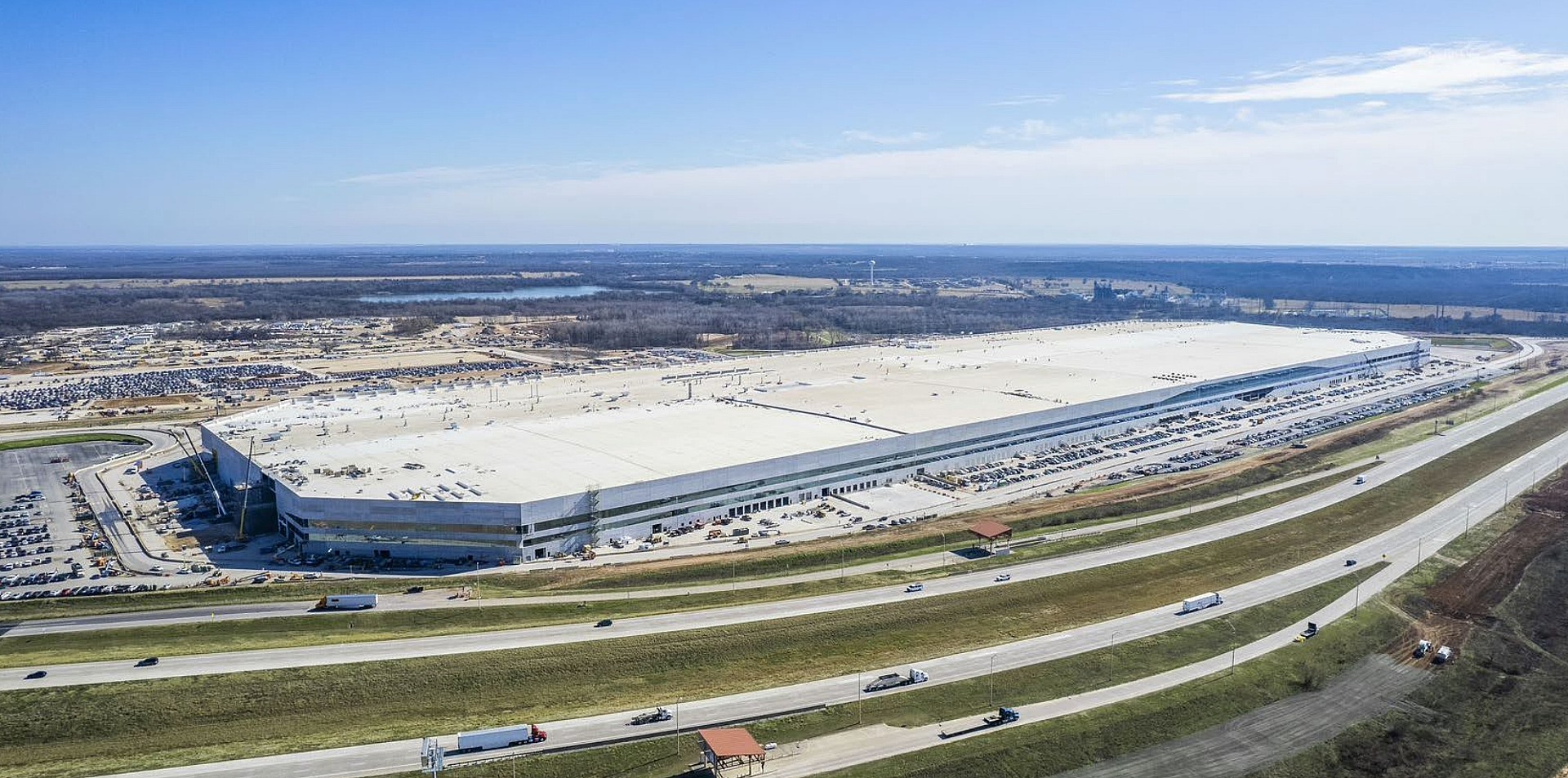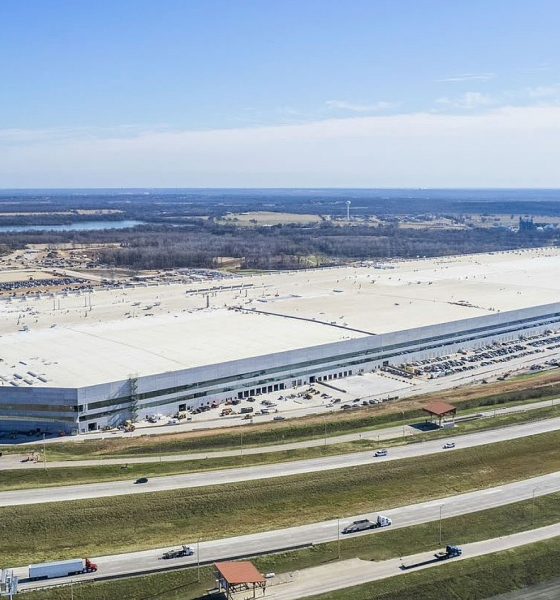A $500 million, 2,500 home development project will come to the City of Austin located near Tesla’s Gigafactory Texas as the electric automotive plant is catalyzing employment in the area and bringing on a need for more housing.
Hines, a real estate development company based out of Houston, has plans to develop a $500 million housing community on 1,400 acres. The plot of land will be large enough to have 2,500 new houses and between 1,250 and 2,000 multifamily units. Mirador, the project’s name, will be developed in the southeastern portion of Austin, in a location within close proximity to Tesla’s Gigafactory Texas, as just a fifteen-minute drive will get you to the factory from your front door.
Dustin Davidson, a managing director for Hines, said that the influx of employment opportunities, especially Tesla’s new factory, have surged the market for Austin’s residential real estate. “Lots of employment opportunities coming; Tesla’s obviously the big one, but they’re just one of many, and we believe more will come,” Davidson said to the Austin Business Journal (via KXAN).
Hines announced details of the project on its website:
“Mirador will consist of 2,500 single-family lots, 50 acres of multi-family and townhomes (including attached, detached, duplexes, quadplexes) and 75 acres of commercial land. The development will continue a partnership with Gehan Homes and Lennar Homes, add David Weekley Homes, Highland Homes, MHI Homes, and will bring on more builders to in the future. Conveniently located off the 130 Toll and Highway 71, the community offers a suburban ambiance with easy access to the new Tesla Gigafactory, the Circuit of the Americas Formula One racetrack, as well as all the local restaurants, parks, live music venues and other attractions Austin offers in under 15 minutes. Plus, residents can make use of the convenient on-site amenities, such as the 60-acre lake, over 600-acres of greenbelt, community parks, extensive trails and swimming pool.”
Tesla’s Gigafactory Texas is expected to amend an area weakened by the COVID-19 pandemic. Travis County officials launched a “Declaration of Disaster” in March 2020, and Federal Reserve data showed a 10.2 percent spike in unemployment filings from April 2019 to April 2020. According to a presentation given by Tesla in June 2020, the automaker projected that its new plant would supply “5,000 middle-skill jobs that fit a targeted economic development need” and would directly contribute $600 million in annual sales activity. The factory was also expected to create 4,000 new non-Tesla jobs due to “secondary effects.”
Gigafactory Texas’ most recent estimates have projected at least 15,000 new jobs both directly and indirectly at the plant. As of October 2021, Tesla had already created 5,000 new jobs in Austin, the most that any company had created in 2021. Amazingly, Tesla has not received an approval certificate from the State that would allow it to build vehicles at the plant and deliver them to customers, yet it still created more jobs than any other company in the Austin area last year.
Tesla Giga Texas drive-bys show just how massive Elon Musk’s Cybertruck factory really is
Austin: America’s New Hot Spot
Austin has been one of the United States’ most heavily developed cities in the past several years. Tesla may be the biggest name to move its corporate headquarters to the City, but it is not the only company to establish a relatively drastic presence in the area. Google is investing $50 million in Texas this year to develop office space. Amazon is building a new 3.8 million square foot distribution center in nearby Pflugerville. Apple is building a $1 billion campus in north Austin and will move some of its employees to the area.
However, Tesla’s Factory seemed to spark the job creation, according to Austin-area realtor Paul Smith. “Once Tesla was announced, now all of a sudden you have job creation. That’s the one thing that it didn’t really have is, southeast Austin was kind of neglected for a little bit, right?” Smith said. The surge of corporate projects in the area has contributed to skyrocketing home costs. The neighborhood closest to Mirador had its average house price jump $93,000 from December 2020 to December 2021, Redfin data suggests.
The influx of economic growth, which has largely been fed by the vast number of projects and companies headed to the region, has largely fueled housing costs to skyrocket thanks to increased demand. More families will move to the Austin area in the coming years due to its attractiveness to corporations and large companies. Austin was ranked #1 on Zillow’s hottest housing market for 2021. In 2022, the City ranks 10th.
I’d love to hear from you! If you have any comments, concerns, or questions, please email me at joey@teslarati.com. You can also reach me on Twitter @KlenderJoey, or if you have news tips, you can email us at tips@teslarati.com.

Elon Musk
Elon Musk and Tesla AI Director share insights after empty driver seat Robotaxi rides
The executives’ unoccupied tests hint at the rapid progress of Tesla’s unsupervised Robotaxi efforts.

Tesla CEO Elon Musk and AI Director Ashok Elluswamy celebrated Christmas Eve by sharing personal experiences with Robotaxi vehicles that had no safety monitor or occupant in the driver’s seat. Musk described the system’s “perfect driving” around Austin, while Elluswamy posted video from the back seat, calling it “an amazing experience.”
The executives’ unoccupied tests hint at the rapid progress of Tesla’s unsupervised Robotaxi efforts.
Elon and Ashok’s firsthand Robotaxi insights
Prior to Musk and the Tesla AI Director’s posts, sightings of unmanned Teslas navigating public roads were widely shared on social media. One such vehicle was spotted in Austin, Texas, which Elon Musk acknowleged by stating that “Testing is underway with no occupants in the car.”
Based on his Christmas Eve post, Musk seemed to have tested an unmanned Tesla himself. “A Tesla with no safety monitor in the car and me sitting in the passenger seat took me all around Austin on Sunday with perfect driving,” Musk wrote in his post.
Elluswamy responded with a 2-minute video showing himself in the rear of an unmanned Tesla. The video featured the vehicle’s empty front seats, as well as its smooth handling through real-world traffic. He captioned his video with the words, “It’s an amazing experience!”
Towards Unsupervised operations
During an xAI Hackathon earlier this month, Elon Musk mentioned that Tesla owed be removing Safety Monitors from its Robotaxis in Austin in just three weeks. “Unsupervised is pretty much solved at this point. So there will be Tesla Robotaxis operating in Austin with no one in them. Not even anyone in the passenger seat in about three weeks,” he said. Musk echoed similar estimates at the 2025 Annual Shareholder Meeting and the Q3 2025 earnings call.
Considering the insights that were posted Musk and Elluswamy, it does appear that Tesla is working hard towards operating its Robotaxis with no safety monitors. This is quite impressive considering that the service was launched just earlier this year.
Elon Musk
Starlink passes 9 million active customers just weeks after hitting 8 million
The milestone highlights the accelerating growth of Starlink, which has now been adding over 20,000 new users per day.

SpaceX’s Starlink satellite internet service has continued its rapid global expansion, surpassing 9 million active customers just weeks after crossing the 8 million mark.
The milestone highlights the accelerating growth of Starlink, which has now been adding over 20,000 new users per day.
9 million customers
In a post on X, SpaceX stated that Starlink now serves over 9 million active users across 155 countries, territories, and markets. The company reached 8 million customers in early November, meaning it added roughly 1 million subscribers in under seven weeks, or about 21,275 new users on average per day.
“Starlink is connecting more than 9M active customers with high-speed internet across 155 countries, territories, and many other markets,” Starlink wrote in a post on its official X account. SpaceX President Gwynne Shotwell also celebrated the milestone on X. “A huge thank you to all of our customers and congrats to the Starlink team for such an incredible product,” she wrote.
That growth rate reflects both rising demand for broadband in underserved regions and Starlink’s expanding satellite constellation, which now includes more than 9,000 low-Earth-orbit satellites designed to deliver high-speed, low-latency internet worldwide.
Starlink’s momentum
Starlink’s momentum has been building up. SpaceX reported 4.6 million Starlink customers in December 2024, followed by 7 million by August 2025, and 8 million customers in November. Independent data also suggests Starlink usage is rising sharply, with Cloudflare reporting that global web traffic from Starlink users more than doubled in 2025, as noted in an Insider report.
Starlink’s momentum is increasingly tied to SpaceX’s broader financial outlook. Elon Musk has said the satellite network is “by far” the company’s largest revenue driver, and reports suggest SpaceX may be positioning itself for an initial public offering as soon as next year, with valuations estimated as high as $1.5 trillion. Musk has also suggested in the past that Starlink could have its own IPO in the future.
News
NVIDIA Director of Robotics: Tesla FSD v14 is the first AI to pass the “Physical Turing Test”
After testing FSD v14, Fan stated that his experience with FSD felt magical at first, but it soon started to feel like a routine.

NVIDIA Director of Robotics Jim Fan has praised Tesla’s Full Self-Driving (Supervised) v14 as the first AI to pass what he described as a “Physical Turing Test.”
After testing FSD v14, Fan stated that his experience with FSD felt magical at first, but it soon started to feel like a routine. And just like smartphones today, removing it now would “actively hurt.”
Jim Fan’s hands-on FSD v14 impressions
Fan, a leading researcher in embodied AI who is currently solving Physical AI at NVIDIA and spearheading the company’s Project GR00T initiative, noted that he actually was late to the Tesla game. He was, however, one of the first to try out FSD v14.
“I was very late to own a Tesla but among the earliest to try out FSD v14. It’s perhaps the first time I experience an AI that passes the Physical Turing Test: after a long day at work, you press a button, lay back, and couldn’t tell if a neural net or a human drove you home,” Fan wrote in a post on X.
Fan added: “Despite knowing exactly how robot learning works, I still find it magical watching the steering wheel turn by itself. First it feels surreal, next it becomes routine. Then, like the smartphone, taking it away actively hurts. This is how humanity gets rewired and glued to god-like technologies.”
The Physical Turing Test
The original Turing Test was conceived by Alan Turing in 1950, and it was aimed at determining if a machine could exhibit behavior that is equivalent to or indistinguishable from a human. By focusing on text-based conversations, the original Turing Test set a high bar for natural language processing and machine learning.
This test has been passed by today’s large language models. However, the capability to converse in a humanlike manner is a completely different challenge from performing real-world problem-solving or physical interactions. Thus, Fan introduced the Physical Turing Test, which challenges AI systems to demonstrate intelligence through physical actions.
Based on Fan’s comments, Tesla has demonstrated these intelligent physical actions with FSD v14. Elon Musk agreed with the NVIDIA executive, stating in a post on X that with FSD v14, “you can sense the sentience maturing.” Musk also praised Tesla AI, calling it the best “real-world AI” today.










